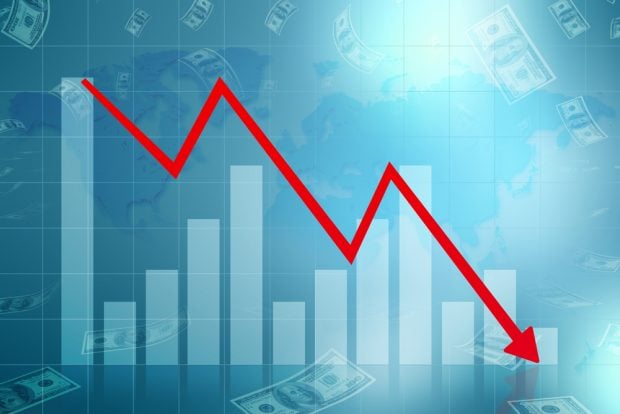TransUnion reported Monday average balances of both revolving and non-revolving consumer credit accounts fell year over year as of Sept. 30, 2015.
The Chicago-based consumer data firm revealed average revolving balances decreased by 3.9% in the last year to $10,931 in the third quarter of 2015. Non-revolving debt per consumer also decreased by 0.3% over the year, ending at an average of $113,973 per consumer in Q3 2015, the company said.
TransUnion partially blamed the drop in average balances on larger numbers of subprime consumers who gained access to credit but had generally lower credit limits. The firm also pointed out aggregate revolving credit balances increased by $13.5 billion between Q3 2014 and Q3 2015, while aggregate non-revolving debt rose by $249.5 billion over the same time period.
Recommended For You
"Consumer credit performance continued to be healthy in the third quarter of 2015," Ezra Becker, vice president of research and consulting in TransUnion's financial services business unit, said.
"Delinquencies for mortgages continued to drop, while both auto and credit card default rates remained near all-time lows," he added. "Overall balance growth reflects consumer optimism and increased access to credit. Lenders are offering credit to consumers across the risk spectrum, and consumers are using that credit responsibly. We are poised to continue this positive momentum into the holiday season."
 TransUnion reported auto lending continued its strong growth, with auto loan balances passing $1 trillion in Q3 2015 – an 11.1% increase from Q3 2014. In the past year, auto loan balances increased from $101 billion to $1.008 trillion in Q3 2015, the company revealed. (At left: Chart representing auto loan debt per borrower)
TransUnion reported auto lending continued its strong growth, with auto loan balances passing $1 trillion in Q3 2015 – an 11.1% increase from Q3 2014. In the past year, auto loan balances increased from $101 billion to $1.008 trillion in Q3 2015, the company revealed. (At left: Chart representing auto loan debt per borrower)
Subprime auto loan borrowers remained the smallest segment of the market with $154 billion or 15.3% of total auto loan balances, the company announced. However, it added this was the highest share of the market subprime auto loan borrowers held since Q1 2011.
The average auto loan balance across all borrower categories stood at $14,515 in Q3 2015, a 2.7% increase year over year, and the slowest pace of average balance growth since Q4 2011, TransUnion said. The company added the average subprime auto loan balance increased by 4.2% from $13,328 in Q3 2014 to $13,890 in Q3 2015, representing the lowest growth rate since early 2012.
The firm also reported auto loan delinquencies – which occur when borrowers are more than 90 days late on loan payments – remained flat at 1.16% in both Q3 2014 and Q3 2015.
"As total auto loan balances rise, we're seeing controlled and deliberate growth by lenders," Jason Laky, senior vice president and automotive business leader for TransUnion, said. "Consumers continue to feel confident in their employment or job prospects, and their appetite for new auto loans reflects this confidence."
 The data firm also reported credit card originations as of June 30, 2015 grew by 12.2% from the same period last year, hitting 15.2 million. (At left: Chart representing credit card debt per borrower)
The data firm also reported credit card originations as of June 30, 2015 grew by 12.2% from the same period last year, hitting 15.2 million. (At left: Chart representing credit card debt per borrower)
TransUnion said it included credit card origination numbers from the quarter previous to the quarter being reported on to ensure its analysis encompassed all data.
Total credit card balances in Q3 2015 grew by 4.7%, reaching $637 billion, according to the company. Balances in Q3 2014 posted nearly $30 billion lower, when the total balance was $608 million. Viewed quarter to quarter, total balances grew by 2.4%, up from $622 million in Q2 2015.
"The growth in total bank card balances, combined with stable delinquency levels, indicates consumers are comfortable with and willing to use their credit cards," Paul Siegfried, senior vice president and credit card business leader for TransUnion, said. "The current credit card environment also suggests a stabilization in the supply and demand equilibrium for credit."
 In the mortgage lending category, the company announced the rate of mortgage borrowers more than 60 days late on their payments declined by nearly 30%, from 3.36% in Q3 2014 to 2.40% in Q3 2015. The firm added the delinquency rate in Florida – one of the states hit hardest during the economic downturn – declined by 65% from its Q1 2010 peak of 6.94%.
In the mortgage lending category, the company announced the rate of mortgage borrowers more than 60 days late on their payments declined by nearly 30%, from 3.36% in Q3 2014 to 2.40% in Q3 2015. The firm added the delinquency rate in Florida – one of the states hit hardest during the economic downturn – declined by 65% from its Q1 2010 peak of 6.94%.
More consumers of all ages paid their mortgages on time in Q3 2015, the firm reported, with mortgage delinquency dropping across all age groups by between 27% and 30% (see chart at left).
"The decline in serious mortgage delinquencies is continuing and even ramping up, with steadily increasing absolute drops over the last year," Joe Mellman, vice president and mortgage business leader for TransUnion, commented. "We believe this is due to a combination of factors, including strong performance by recent vintage mortgage loans, improving home prices, and the continued funneling of delinquent accounts through the foreclosure process."
© Touchpoint Markets, All Rights Reserved. Request academic re-use from www.copyright.com. All other uses, submit a request to [email protected]. For more inforrmation visit Asset & Logo Licensing.






